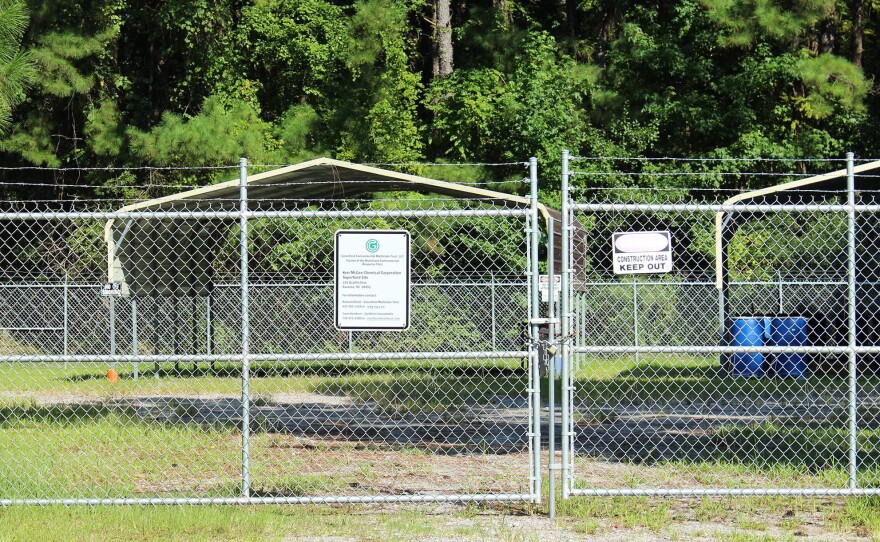In Navassa, between the Brunswick River and Navassa Road, there’s a Superfund site. It sits behind a chain-link fence topped with barbed wire and no trespassing signs. It’s a heavily wooded area today. However after the cleanup it may look a lot different.
The former Kerr-McGee Chemical Company site became a Superfund site in 2010, when the U.S. Environmental Protection Agency added it to the national priorities list. That means the EPA decided that the location was polluted with toxins at such a level that it required the federal agency to oversee the cleanup.
From the 1930s to the 1970s, the 250-acre location was a creosote wood-treatment plant. Creosote is a preservative. The last owners, Kerr-McGee, closed it down in 1980. The jobs left, but the creosote remained.
(SFX – meeting ambience up and under)
Every three months at the Navassa Community Center, residents gather to get an update on the cleanup.
There are three groups leading the effort. The EPA, the North Carolina Department of Environmental Quality, and the Multistate Environmental Response Trust.
David Mattison is project manager for the DEQ.
“This is an early aerial photograph from 1938 and it depicts the plant in its earliest days of operation and we have a series of aerial photographs that go from 1938 all the way to present day. They just show the evolution of the plant and places where wood was stored, whether it was untreated or treated, the process area, the ponds and that sort of thing.”
Not all of this property is heavily polluted with Creosote, which the EPA says is a likely human carcinogen. Erik Spalvins is with the EPA.
“Now we're finding that a large part of this site doesn't have a tremendous amount of contamination. Down where the process area was there's more contamination, under the wastewater ponds. There's a lot of creosote in the aquifer, which we're working on figuring out how to handle that. And then in the marsh there's creosote in a small part of the marsh that we're studying today.”
Spalvins says they will clean up the northern section first, so that it can be redeveloped sooner. That should start in 18 months.
“My name's Richard Elliot and I'm the director of construction services and senior project manager for the Greenfield Multistate Environmental Response Trust.”
The trust came out of a lawsuit involving the former property owners.
“So we manage the money to try to clean up the property. We don't redevelop it. We set it up for redevelopment. We remediate it. And then we sell it to a third party. The reason we went through this process, a couple of reasons, but the primary one was we want to develop the remedy to fit what the future use will be, so that's the most efficient way to do that. And then also we engage the community in this so they had a part in helping us understand what type of third party we want to be working with.”
The proposed plans for the redevelopment include kayak and boat launches, a cultural center, an area for light industry and commercial, plus hiking trails and open space.
Navassa Mayor Eulis Willis says his community has appreciated the transparent process around this project.
“You know, you get the war stories, you know, the ones where you get the low income community that's not very worldly, right? And you coming in and you pull the wool over the eyes and you do like you want to do. Well, I don't have that concern or not a major concern with that happening in this case, because of the transparency and the willingness of the participants to help bring in assistance, to give us explanations to take the time and show us what's going on. I feel pretty good about it.”
Much of the cleanup will involve removing contaminated soil. Underground barriers may also be necessary to keep contaminated groundwater from seeping into marshes and the Brunswick River.









